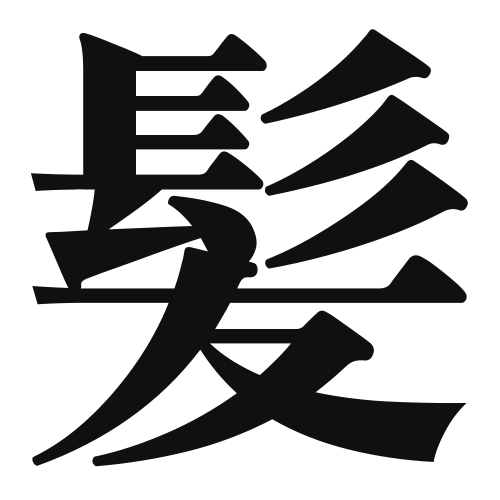1. Overview of Meaning
The kanji “髪” (pronounced “kami”) means “hair” in Japanese. It refers to the hair on a person’s head and can also be used to describe hair in a more general sense.
2. Formation and Radical
The kanji “髪” is a compound character that consists of two parts: the radical “毛” (meaning “hair” or “fur”) and the phonetic component “神” (which contributes to the pronunciation). This character is classified as a 形声文字 (phonetic-ideographic character), where the radical indicates the meaning and the phonetic part suggests the sound.
The radical “毛” is commonly associated with hair or fur, making it a fitting component for this kanji.
3. Examples of Usage
Common words and phrases that include “髪” are:
- 髪型 (かみがた, kamigata) – hairstyle
- 髪の毛 (かみのけ, kaminoke) – hair (more specifically, strands of hair)
- 白髪 (しらが, shiraga) – gray hair
Example sentences in daily conversation:
- 彼女は新しい髪型にした。 (かのじょはあたらしいかみがたにした。) – She got a new hairstyle.
- 髪の毛が長いですね。 (かみのけがながいですね。) – Your hair is long, isn’t it?
4. Synonyms and Antonyms
Similar kanji with related meanings include:
- 毛 (け, ke) – This kanji also means “hair” but is more general and can refer to hair on animals or fur.
Antonyms include:
- 禿 (はげ, hage) – This kanji means “bald” and refers to the absence of hair.
5. Cultural and Historical Background
The kanji “髪” is deeply rooted in Japanese culture, where hair has significant cultural meanings, often associated with beauty and identity. In traditional Japanese culture, long hair was considered a symbol of femininity and grace.
Proverbs and idiomatic expressions related to hair include:
- 髪は女の命 (かみはおんなのいのち, kami wa onna no inochi) – “Hair is a woman’s life,” emphasizing the importance of hair in a woman’s beauty.
